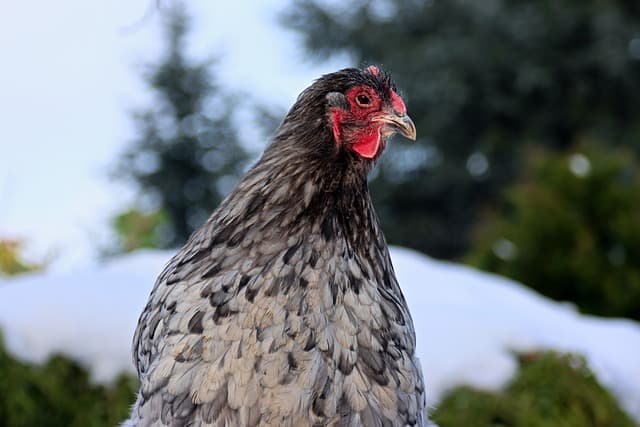
Comb Types Explained: A Guide to Chicken Head Shapes
Feb 03, 2025 • Identification • 6 minute read
A chicken’s comb is one of its most recognizable features. While it may seem decorative, the shape and size of the comb are often tied to breed, genetics, and even health. Whether you are a backyard chicken keeper or a show breeder, understanding comb types can help you identify and care for your birds more accurately.
What Is a Comb and Why It Matters
The comb is the fleshy crest on top of a chicken’s head. It helps regulate body temperature and plays a role in mating and breed recognition. Roosters often have larger, more pronounced combs than hens.
Comb types are determined by genetics and remain fairly consistent throughout a chicken’s life. They appear shortly after hatching and develop fully as the bird matures.
Knowing a chicken’s comb type can help narrow down its breed. In shows, correct comb type is often part of breed standards, making it a crucial feature for both identification and evaluation.

Common Chicken Comb Types
There are several recognized comb types. The most common is the single comb, a straight row of spikes running from beak to crown. Rose combs are flatter with a bumpy texture and a pointed end. Pea combs are short and compact with three ridges. Other types include walnut, V-shaped, cushion, and buttercup combs.
Each type is linked to specific breeds. For example, Leghorns have single combs, while Wyandottes have rose combs. Ameraucanas are known for their pea combs. Recognizing these types helps in breed identification and selection.
The Genetics Behind Comb Types
Comb shape is inherited through specific genes. The single comb is the most basic form and is considered recessive. Other types, like pea and rose combs, are dominant or involve more complex genetic interactions.
Some comb types are the result of combinations. For example, the walnut comb comes from crossing a rose comb bird with a pea comb bird. These combinations are often seen in ornamental or hybrid breeds.
Breeders sometimes use comb genetics to predict outcomes in chick development or to maintain breed standards. Understanding the dominant and recessive traits is helpful when planning matings.

Does Comb Type Affect a Chicken’s Health?
While comb shape itself does not determine health, the comb can give clues about a chicken’s condition. A bright red comb usually indicates good circulation and health, while a pale or shriveled comb may signal illness or stress.
In cold climates, certain comb types like rose or pea are preferred because they are less prone to frostbite compared to large single combs. Choosing the right comb type for your region can improve the welfare of your flock.
Breed Examples and Their Comb Types
Knowing which breeds have which comb types can be helpful for identification. Here are some examples.
Single Comb: Leghorn, Orpington, Rhode Island Red. Rose Comb: Wyandotte, Sebright, Dominique. Pea Comb: Ameraucana, Brahma, Buckeye. Walnut Comb: Silkie. V Comb: Polish, La Fleche. Cushion Comb: Chantecler. Buttercup Comb: Sicilian Buttercup.
Each of these breeds has a distinct appearance, but comb shape is often one of the first traits used for early identification. This is especially useful when chicks are still developing feathers.
For hobbyists, knowing comb types can also guide breeding decisions and help ensure that new birds match the traits expected for their breed.

Conclusion
Comb types are more than just a physical feature. They serve important roles in temperature regulation, mating, and breed identification. By learning to recognize the different types, you can better understand your chickens and make informed decisions about care, breeding, and selection.
Whether you are identifying a new chick or preparing for a poultry show, paying attention to the comb can offer valuable insight into your bird’s breed and background.




